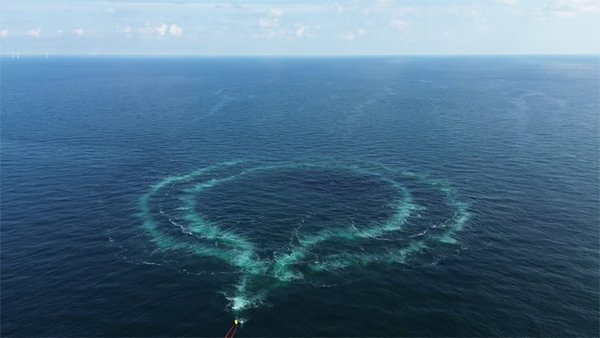Wind Farm Developer Clears World War II Sea Mines from North Sea Site
The teams surveying the site for Germany’s largest offshore wind farm recently identified and cleared unexploded ordnance from World War II as they undertook the geoscience ahead of construction of the Nordlich project. The site is located just over 50 miles north of Borkum Island, which is in the North Sea near Germany’s western border with the Netherlands and the entrance to the busy Ems estuary.
Vattenfall took the financial decision to proceed with the construction of the wind farm in March 2025 and plans for work to commence next year. Nordlich 1 will have a capacity of around 980 MW, and a second phase is planned with a further 630 MW. The wind farms are expected to be operational in 2028.
Over the past two years, the company reports that large-scale geophysical surveys of the seabed have been underway. During this work, they detected magnetic anomalies, and Vattenfall says it indicated the presence of some form of metal bodies in the water.
The data was submitted for expert interpretation, examining each site individually, and this spring, they used ROVs for further examination. Ultimately, they determined that there were three sea mines, each with an explosive force comparable to 200 to 300 kg of TNT. The company says that there are many such legacy wastes that still lie dormant on the seabed, but in this case, they needed to be removed before offshore construction of the wind farm begins.

A "bubble curtain" was deployed to dampen the sound of the blast (Vattenfall)
Removal of the hazards, however, required a complex permitting process. In September, they obtained approval for controlled explosions of the three mines. However, the permit prohibited simultaneous exposure to two large noise events in the German Bight.
The process for planning the detonations required coordination with RWE, which is conducting pile driving in the area. A total of seven vessels were also involved and needed to be coordinated, including support vessels for the detonation and to control traffic.
An ROV was used for the blasting. In addition, the company deployed a 90-meter-long (295-foot) “bubble curtain” vessel. The vessel lays a double ring of tubes on the seabed, which creates a curtain of air bubbles that dampen the sound from the blast.
Vattenfall reports the site has been successfully cleared, moving it a step closer to the construction of the wind farm.
Content Original Link:
" target="_blank">





















































